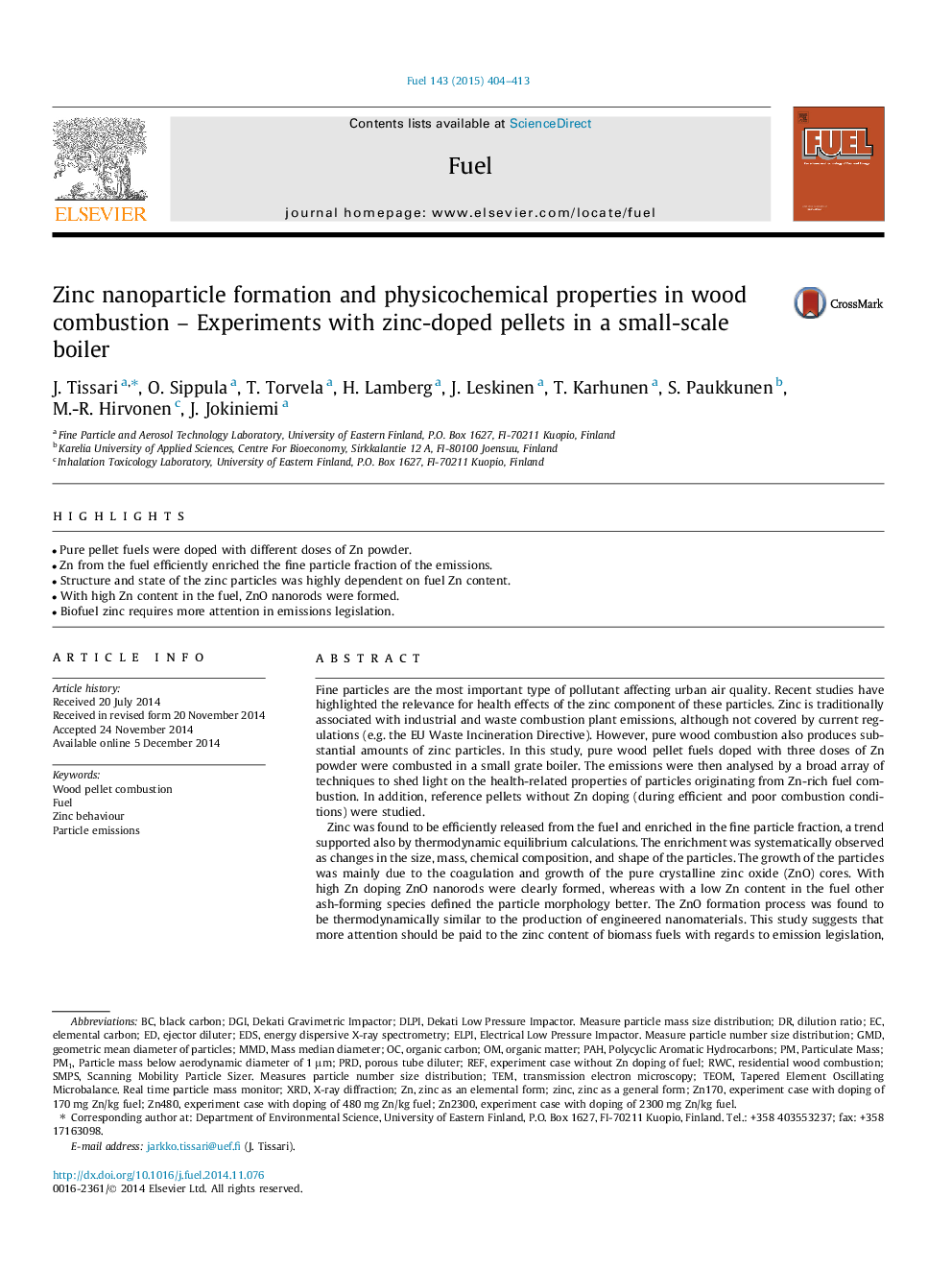| Article ID | Journal | Published Year | Pages | File Type |
|---|---|---|---|---|
| 6635941 | Fuel | 2015 | 10 Pages |
Abstract
Zinc was found to be efficiently released from the fuel and enriched in the fine particle fraction, a trend supported also by thermodynamic equilibrium calculations. The enrichment was systematically observed as changes in the size, mass, chemical composition, and shape of the particles. The growth of the particles was mainly due to the coagulation and growth of the pure crystalline zinc oxide (ZnO) cores. With high Zn doping ZnO nanorods were clearly formed, whereas with a low Zn content in the fuel other ash-forming species defined the particle morphology better. The ZnO formation process was found to be thermodynamically similar to the production of engineered nanomaterials. This study suggests that more attention should be paid to the zinc content of biomass fuels with regards to emission legislation, for example when wood bark is utilised in energy production. This concern, in particular, the small and medium scale (below 1Â MW) power plants as efficient particle removal techniques are generally utilised in large scale power plants.
Keywords
SMPSRWCPM1TEOMGMDELPIPAHPRDEDSDGIMMDResidential wood combustionenergy dispersive X-ray spectrometryParticle emissionsTemParticulate massFuelZincorganic matterREFTransmission electron microscopyDilution ratioPolycyclic aromatic hydrocarbonsX-ray diffractionXRDOrganic carbonBlack carbonelemental carbon
Related Topics
Physical Sciences and Engineering
Chemical Engineering
Chemical Engineering (General)
Authors
J. Tissari, O. Sippula, T. Torvela, H. Lamberg, J. Leskinen, T. Karhunen, S. Paukkunen, M.-R. Hirvonen, J. Jokiniemi,
